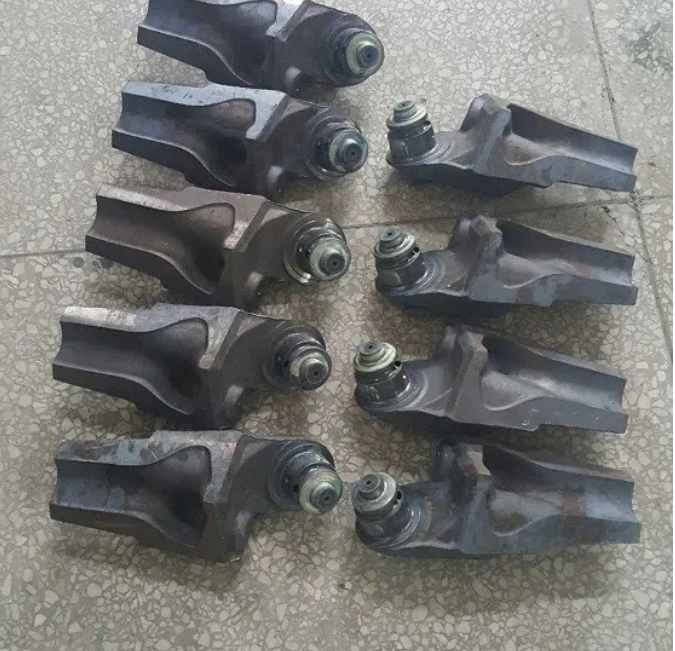

current position:Information and data>Why use plasma surfacing?
As a branch in the field of welding, plasma surfacing technology is widely used in almost all manufacturing industries, such as mining machinery, engineering machinery, metallurgical machinery, power machinery, agricultural machinery, automobiles, petroleum equipment, chemical industry Equipment, building construction and the manufacture and maintenance of tools, molds and metal structural parts. Through plasma surfacing, metal parts and products with enhanced shape and wear can be repaired, or bimetallic alloy parts can be manufactured. Plasma surfacing can prolong the service life of parts, reduce costs, and improve product design, especially for the rational use of materials (especially precious alloy metals). In many applications, plasma surfacing is mainly used to achieve the following three purposes:

1. Restore the workpiece size (plasma repair and remanufacturing)
Due to the wear and tear caused by the harsh working conditions, the size of the parts is insufficient and cannot be used normally, which is a frequent headache for industrial and mining enterprises. Usually only local wear and tear occurs in the workpiece, and discarding these wear parts at will is not in line with the current trend of promoting environmental protection and building a conservation-oriented society. It is a very effective process to repair the above-mentioned workpieces by means of plasma surfacing welding of wear-resistant alloys.
The repaired workpiece can not only be used normally, but in many cases can exceed the service life of the original workpiece, because the new plasma technology and new alloy materials are used for surfacing repair, which can greatly improve the performance of the original parts. Such as the surface surfacing repair of cold rolls, coal mine hydraulic props and special-shaped rollers, construction machinery (crusher, brick making machine, etc.), oil mining equipment (drill pipes, drill collars, etc.) Wear parts surfacing repair, etc. According to statistics, the amount of plasma surfacing alloy used to repair old workpieces accounts for about 70% of the total surfacing alloy.
2. Improve the fatigue resistance and corrosion resistance of the workpiece (plasma surfacing alloy coating)
Fatigue and corrosion are important factors that cause the failure of metal materials. In order to improve the fatigue resistance, high temperature resistance, corrosion resistance and other characteristics of the surface of the metal workpiece, to meet the requirements of working conditions and prolong the service life of the workpiece, a plasma surfacing welding can be used on the surface of the workpiece. Layer or several layers of alloy materials can effectively improve the properties of the workpiece. For example, it is widely used in the production of valve sealing surface, valve and seat ring, oil drill bit and centralizer, injection molding machine screw, pick wear belt and other parts.
The substrate (base metal) and surface surfacing layer (welding material) of the workpiece are made of materials with different characteristics, which can produce bimetal or even multi-alloy workpieces. Since only the surface layer of the workpiece has the required special properties in terms of wear resistance and corrosion resistance, the role and working potential of the alloy material are fully utilized, thereby saving a lot of precious metals.
Typical applications are surfacing wear-resistant plates. In the manufacturing process of wear-resistant plates, ordinary low-carbon steel or low-alloy steel with good toughness and plasticity is used on the surface, and the surface of a certain thickness of high hardness and resistance is compounded by plasma surfacing method. Wear-resistant alloy layer with excellent abrasiveness, its surface hardness can reach HRC58-62. Using alloy materials with different properties, it can be made into various composite wear-resistant plates with excellent properties such as no cracks, no magnetism, high temperature and impact resistance, corrosion resistance and wear resistance, fatigue resistance and oxidation resistance.
3. Manufacture of new parts (plasma arc 3D printing)
Plasma arc 3D printing is to manufacture machine parts with comprehensive properties by surfacing alloy materials directly on the substrate or on the metal matrix. Due to the use of plasma arc powder metallurgy to manufacture such parts, alloy materials with different properties can be pre-set to be printed in different parts, which can meet many special functional design requirements of new parts, and fully tap the huge potential of alloy materials.
For example, for the blade of a water turbine, the base material is carbon steel, and a layer of stainless steel is surfacing on the part where cavitation may occur (mostly in the lower half of the back of the blade) to make it a bimetallic blade that is resistant to cavitation; in the manufacture of metal molds In the middle, the base body is required to be strong and tough, and it is made of relatively cheap carbon steel and low-alloy steel, while the blade mold requires high hardness and wear resistance. The wear-resistant and high-temperature alloy is used for surfacing welding on the mold blade mold part, which can greatly prolong the mold life. service life.
Hot information

